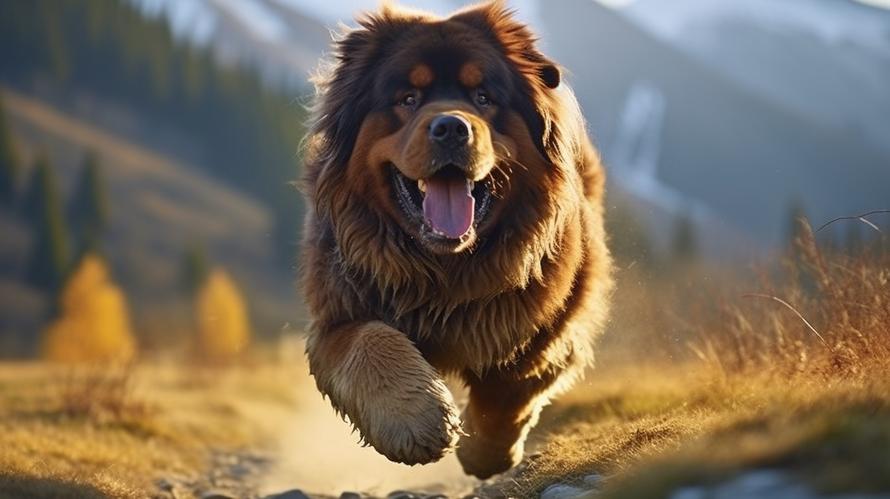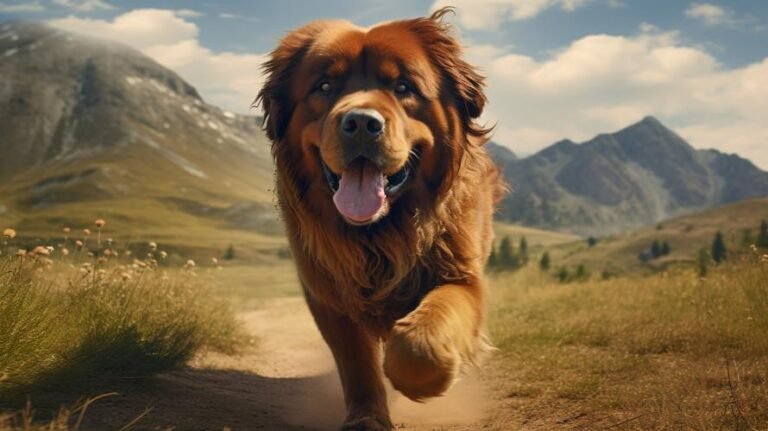Once upon a time, in the highlands of Tibet, there lived a mighty dog breed that spent its days guarding livestock and temples. These dogs were not your everyday pets, they were possessed of an immense stature, a lion-like mane, and an intensely spirit especially when it came to protecting property. Recognize these traits? Yes, they belong to none other than the steadfast Tibetan Mastiff.
Looking at a Tibetan Mastiff for the first time might intimidate you. Their muscular build, massive size, and bold stance give other giant breeds like Saint Bernards and Caucasian Shepherds a run for their money. Despite their formidable appearance, these dogs possess a calm demeanor. They are often gentle and aloof beyond their guarding duty: but make no mistakes! A Tibetan Mastiff’s watchful eyes miss nothing.
You see, Tibetan Mastiffs originated in the harsh climate of Tibet, surrounded by threats from wildlife like wolves and snow leopards. These challenges forged them into one of the most dependable guard dogs around. Their natural disposition toward cautiousness, alertness, and independence combined with their large size and powerful bark is a living, breathing security system.
However, before you run to get a Tibetan Mastiff , let’s explore whether this breed is right for you.
Tibetan Mastiffs are members of an ancient breed that has been around for centuries, their lineage traces back to dogs that sided with early civilizations, protecting livestock and property. This illustrious history is entrenched in their genes, making them extremely independent and territorial. That’s not to say they can’t be great family pets too, but setting expectations right is important if you’re considering a Tibetan Mastiff for a pet.
They are known for their powerful bark! Existing owners have often been quoted saying that the breed can “bark for hours” without getting tired. This, combined with their protective nature, makes them stellar guard dogs but you might want to consider that if you live in an apartment or a closely packed suburban neighborhood.
These regal creatures require plenty of space. They thrive in large, open spaces where they can survey territories and exercise their protective instincts. They are also known for their great strength and endurance, often patrolling their surroundings tirelessly. If you’re living in a small apartment or in an urban area, it may not be suitable for a Tibetan Mastiff.
On the flip side, Tibetan Mastiffs are very intelligent and can be trained to act appropriately in different social scenarios. But these dogs are known for their stubbornness. Training a Tibetan mastiff might require a lot of patience and consistency.
Additionally, Tibetan Mastiffs are not the most active dogs in the world. Unlike a Labrador Retriever or a German Shepherd, these dogs would much rather spend their day lounging and taking long, easy strolls than playing fetch in the park. This makes them a great low-energy companion but if you’re looking for a jogging partner, a Tibetan Mastiff may not be the right choice.
Often, the question arises about how well a Tibetan Mastiff would fare with kids. Many owners argue that these dogs, with the correct training and socialization, can become excellent family pets. Children should be taught to respect the dog’s space and avoid troubling them during meal times. Like any dog, a Tibetan Mastiff can become agitated when they feel their space is being threatened.
To wrap things up, Tibetan Mastiffs make excellent guard dogs. Their appearances are formidable, their barks thunderous, their protection instinct unrivalled and their loyalty unparalleled. But they require lots of space and their training could require more patience than most dog breeds.
If you’re considering getting a Tibetan Mastiff, think about these factors well and you’ll make a decision that will suit you and your gorgeous Tibetan Mastiff. In the right environment, these majestic dogs can bring such joy, love and, most importantly, an unwavering security to your home.



